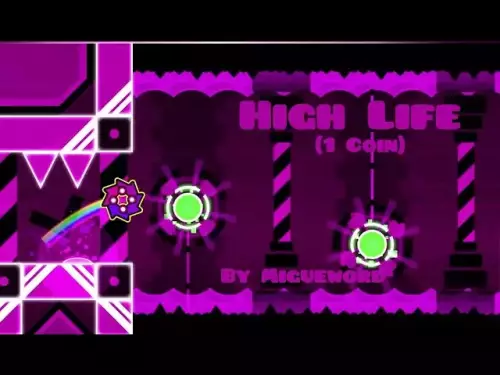 |
|
 |
|
 |
|
 |
|
 |
|
 |
|
 |
|
 |
|
 |
|
 |
|
 |
|
 |
|
 |
|
 |
|
 |
|

Launched in 2015, Ethereum is a decentralized, open-source blockchain that serves as a platform for building smart contracts and decentralized applications (dApps). Unlike Bitcoin, which primarily functions as a digital currency, Ethereum's blockchain provides a broader canvas for innovation.
At its core, Ethereum is a technology that facilitates the creation and execution of smart contracts. These self-enforcing agreements are essentially code-driven contracts that automatically execute, control, or document events and actions based on the terms specified within the smart contract.
The introduction of smart contracts on the Ethereum blockchain has acted as a catalyst for the development of decentralized finance (DeFi) applications, non-fungible tokens (NFTs), and other blockchain-based innovations that are transforming industries.
The native cryptocurrency of the Ethereum network is Ether (ETH), which plays a crucial role in powering transactions, validating smart contracts, and compensating participants within the network. Ether is used to pay for computational services and transaction fees, which are commonly referred to as "gas" in the Ethereum ecosystem. These fees help process transactions and secure the network.
What sets ETH apart from other cryptocurrencies is its utility within the Ethereum ecosystem. Rather than simply being a store of value, ETH is actively used to facilitate the functioning of the Ethereum network, making it an integral part of the ecosystem's operations.
One of the driving forces behind Ethereum's success is its vibrant and expanding community. Ethereum developers are continuously pushing the boundaries of what's possible with blockchain technology. Over the years, Ethereum has undergone several key upgrades aimed at improving scalability, security, and energy efficiency.
For instance, the transition from Proof of Work (PoW) to Proof of Stake (PoS) in Ethereum 2.0 significantly reduces energy consumption and enhances transaction speeds, making the network more sustainable and accessible.
Moreover, the Ethereum ecosystem has become a launching pad for a vast array of projects. From decentralized exchanges (DEXs) like Uniswap to NFT marketplaces like OpenSea, Ethereum serves as the backbone for much of the DeFi and NFT boom.
Projects that build on Ethereum's platform often benefit from the network's security and established reputation, making it an ideal environment for creating innovative solutions to problems across finance, art, and technology.
The rise of Ethereum has also sparked the development of Ethereum-based tokens, many of which serve as key assets in various sectors. ERC-20 tokens, for example, are widely used in DeFi applications, enabling users to trade, borrow, lend, and earn interest on their cryptocurrency holdings.
Ethereum's ecosystem continues to expand, with new projects and tokens emerging regularly to tackle a range of financial, artistic, and technological problems.
However, it's important to note that Ethereum Coin is not a government-backed currency and is subject to price volatility, like other cryptocurrencies. Despite market fluctuations, ETH has consistently maintained its position as the second-largest cryptocurrency by market capitalization, following Bitcoin.
With vast potential for driving decentralized applications and platforms, many believe that Ethereum will continue to play a pivotal role in shaping the future of finance, technology, and even governance.
As Ethereum continues to evolve and grow, the possibilities seem endless. The shift to Ethereum 2.0, coupled with the ongoing development of dApps, DeFi platforms, and NFTs, positions Ethereum as a major force in the broader cryptocurrency and blockchain space.
With each update and upgrade, Ethereum proves that it's more than just a cryptocurrency – it's an entire ecosystem that's helping to define the future of digital interaction.
免責聲明:info@kdj.com
所提供的資訊並非交易建議。 kDJ.com對任何基於本文提供的資訊進行的投資不承擔任何責任。加密貨幣波動性較大,建議您充分研究後謹慎投資!
如果您認為本網站使用的內容侵犯了您的版權,請立即聯絡我們(info@kdj.com),我們將及時刪除。
-

-

- 以太坊價格預測:Bitmine的大賭注和分析師的$ 5K目標
- 2025-09-21 19:57:04
- 以太坊的價格嗡嗡作響! Bitmine不斷購買,分析師的潛在增長到5,000美元。這是加密風暴之前的平靜嗎?
-

- 比特幣價格,降臨預售和十月高點:嗡嗡聲是什麼?
- 2025-09-21 19:50:02
- 比特幣眼睛的新十月高點,而Presale Presale流行了。發現推動這些加密敘事的趨勢和見解。
-

-

- 豐田,Yamaha和USDT Payments:汽車交易的新時代?
- 2025-09-21 19:30:13
- 探索豐田和Yamaha如何在玻利維亞接受USDT付款,以及對汽車行業和加密貨幣採用的影響。
-

-

-

-

- 泵硬幣以70%的突破?鯨魚購買信號主要激增!
- 2025-09-21 19:04:26
- 泵硬幣即將爆炸嗎?大規模的鯨魚購買和看漲班丹南佳的模式表明,潛在的70%的突破即將到來。獲取內部勺子!






























































